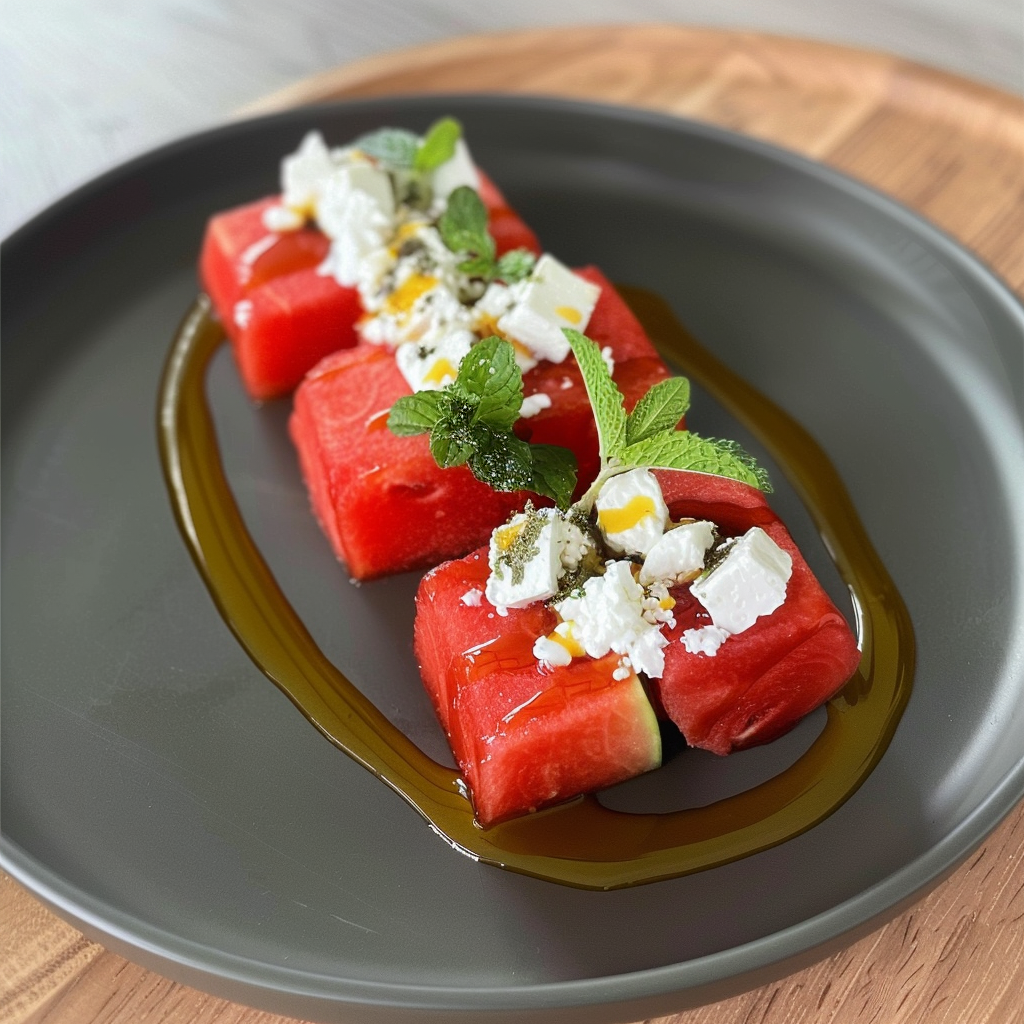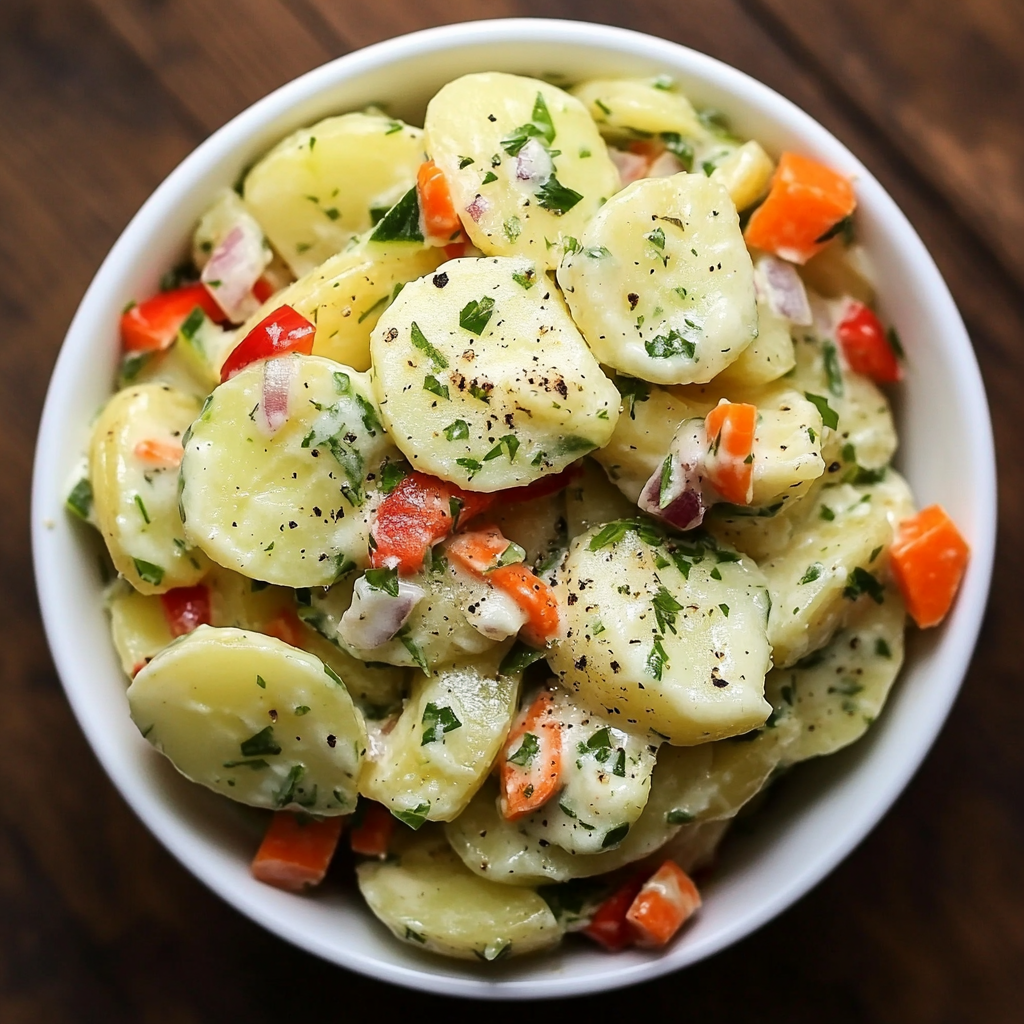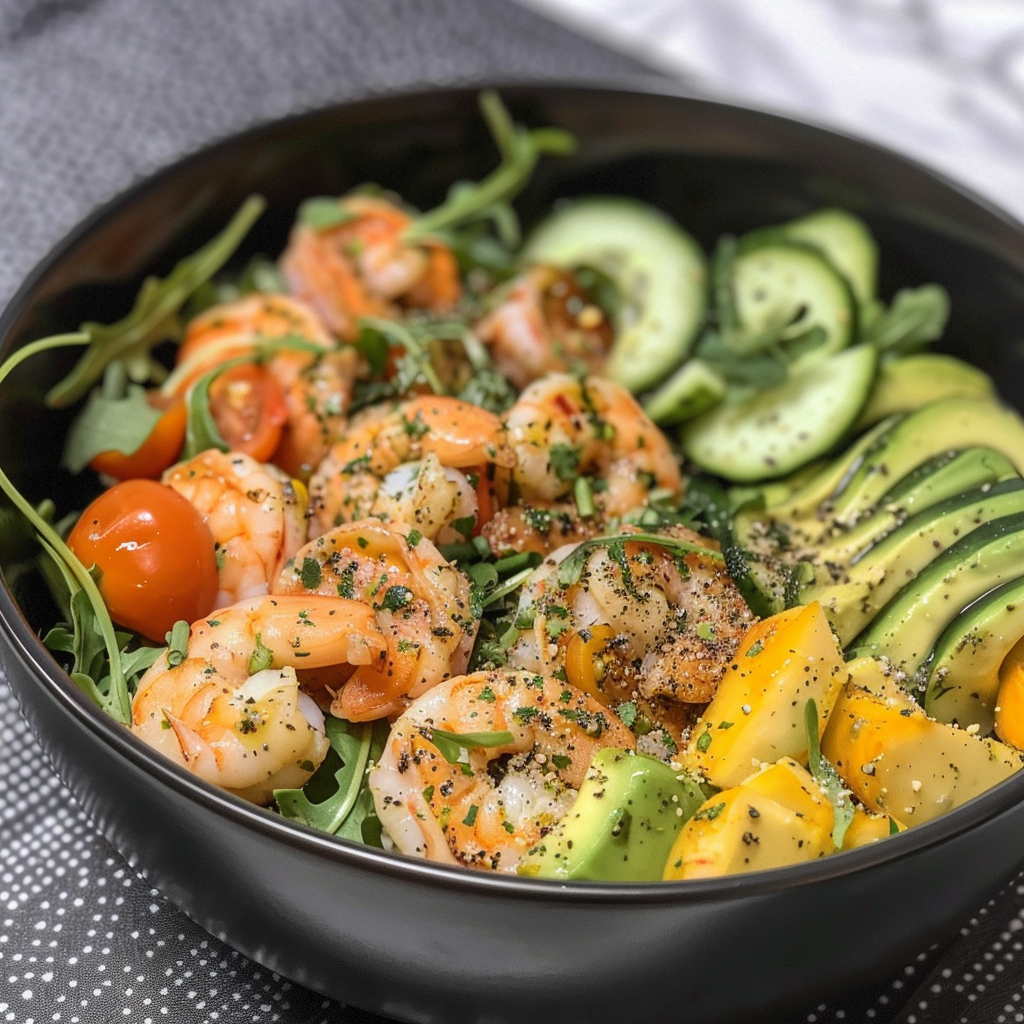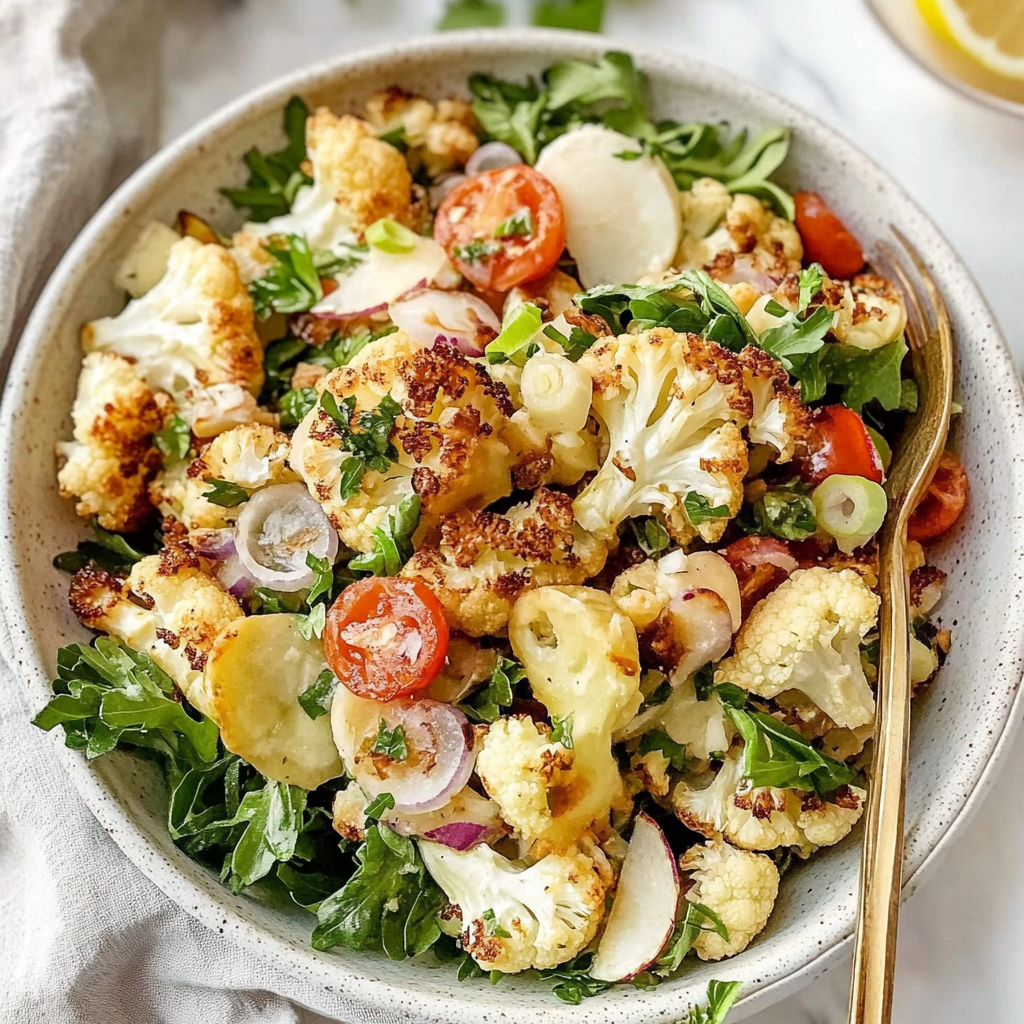Sharing is caring!
Watermelon Feta Salad
Why You’ll Love Watermelon Feta Salad?
Watermelon feta salad is the ultimate summer refresher—bursting with juicy sweetness, creamy saltiness, and a hint of fresh herbs. Perfect for picnics, BBQs, or a light lunch, this dish balances flavors and textures effortlessly. Plus, it’s ready in minutes! If you’re craving more hydrating summer recipes, try this refreshing watermelon juice for another way to enjoy seasonal fruit.
Table of Contents
Ingredients to make watermelon feta salad?
- 4 cups cubed seedless watermelon (about 1 small watermelon)
- 1 cup crumbled feta cheese
- 1/2 cup thinly sliced red onion
- 1/4 cup fresh mint leaves, chopped
- 1/4 cup fresh basil leaves, chopped
- 2 tbsp extra-virgin olive oil
- 1 tbsp balsamic glaze (or substitute with lime juice)
- 1/4 tsp freshly ground black pepper
- Optional: 1/2 cup pitted kalamata olives
Time needed to make watermelon feta salad?
This refreshing watermelon feta salad comes together in just 15 minutes, making it the perfect quick fix for summer gatherings. Prep takes about 10 minutes—just cube the watermelon, crumble the feta, and chop fresh mint. Assembly? A mere 5 minutes! For more speedy summer recipes, check out our kiwi agua fresca that’s equally effortless.
- Prep Time: 10 minutes
- Assembly Time: 5 minutes
- Total Time: 15 minutes
Quick Steps to Make Watermelon Feta Salad?
Step 1: Prep Your Ingredients
Start by cubing fresh watermelon into bite-sized pieces. Aim for even chunks so every bite is balanced. Crumble high-quality feta cheese—go for a block rather than pre-crumbled for better texture.
Step 2: Combine the Base
In a large bowl, gently toss the watermelon cubes with the crumbled feta. Add thinly sliced red onion for a sharp contrast and a handful of fresh mint leaves for brightness.
Step 3: Dress It Up
Drizzle with extra-virgin olive oil and a squeeze of lime juice for tanginess. Lightly season with flaky sea salt and cracked black pepper. Toss just enough to coat without breaking the watermelon.
Step 4: Garnish & Serve
Finish with a sprinkle of chopped mint or basil for color. Serve immediately to keep the watermelon crisp. For extra flair, add toasted pumpkin seeds or a dash of chili flakes.
Is watermelon feta salad healthy and nutritious ?
Absolutely! Watermelon feta salad is not only refreshing but also packed with nutrients. Watermelon is rich in vitamins A and C, which support immune health and skin vitality, while feta cheese provides protein and calcium. The combination makes for a balanced, nutrient-dense dish.
Here’s a quick nutritional breakdown per serving (approx. 1 cup):
- Calories: 120–150 kcal
- Protein: 4–5g (thanks to feta)
- Fiber: 1–2g (from watermelon and greens)
- Healthy Fats: 6–8g (olive oil and feta)
For a deeper dive into hydrating recipes, check out our watermelon juice recipe or explore green juice variations to boost your nutrient intake. If you’re curious about other nutrient-rich salads, this guide offers great insights, or try plant-based soups for added variety.
Can I make watermelon feta salad healthier and still delicious?
Absolutely! Watermelon feta salad is already a refreshing and nutritious dish, but you can easily tweak it to boost its health benefits without sacrificing flavor. Here are some smart swaps and additions to make it even better for you:
1. Reduce the Cheese
While feta adds a delicious salty tang, you can cut the amount in half and still enjoy its flavor. Try crumbling it finely so it distributes more evenly throughout the salad. For a dairy-free alternative, consider using toasted chickpeas for a similar texture and protein boost.
2. Add More Greens
Mix in baby spinach, arugula, or kale to increase fiber and nutrients. These leafy greens pair wonderfully with watermelon’s sweetness. For inspiration, check out our anti-inflammatory turmeric salad for more healthy salad ideas.
3. Use a Lighter Dressing
Swap out olive oil for a spritz of fresh lime or lemon juice. You’ll still get brightness without the extra calories. If you love creamy dressings, try blending avocado with herbs for a rich, nutrient-dense alternative.
4. Boost with Superfoods
Add chia seeds, hemp hearts, or chopped nuts for extra protein and healthy fats. These small additions make the salad more filling. For another hydrating twist, pair it with our refreshing watermelon juice.
5. Skip the Added Sugar
Watermelon is naturally sweet, so there’s no need for honey or sugar in the dressing. If you want extra sweetness, try a drizzle of balsamic glaze instead. For more sugar-free inspiration, explore naturally sweetened recipes.
With these simple tweaks, your watermelon feta salad becomes a powerhouse of nutrition while keeping all its delicious charm!
How to Serve Watermelon Feta Salad?
This refreshing watermelon feta salad is incredibly versatile when it comes to serving. For a light summer lunch, pair it with grilled chicken or shrimp skewers. If you’re hosting a barbecue, serve it alongside burgers or grilled veggies for a cooling contrast. The sweet and salty flavors also make it a fantastic appetizer—try scooping it onto crostini or crisp lettuce cups for bite-sized servings.
For drinks, complement the salad with a chilled kiwi agua fresca or a glass of rosé. If you’re planning a brunch spread, serve it with a moist banana bread for a balanced sweet-savory combo. Garnish with extra mint leaves or a drizzle of balsamic glaze for an elegant touch.
Looking for more pairing ideas? Check out these hearty mains or light dessert options to round out your meal.
Avoid These Mistakes
Making a perfect watermelon feta salad seems simple, but small errors can affect taste and texture. Here’s what to watch out for:
Using Overripe Watermelon
Overripe watermelon turns mushy and overly sweet, overpowering the salad’s balance. Always pick firm, crisp watermelon with deep color. If you’re unsure, check out our guide on selecting the best watermelon for optimal freshness.
Skipping the Draining Step for Feta
Excess moisture from feta can dilute the dressing. Pat it dry before crumbling to maintain texture. For a creamier alternative, try high-quality block feta instead of pre-crumbled varieties.
Dressing Too Early
Adding dressing ahead of time makes the salad soggy. Toss it just before serving to keep ingredients crisp. Pair it with an herb-infused dressing for extra flavor without sogginess.
Neglecting the Mint
Mint adds a refreshing kick, but chopping it too finely releases bitterness. Tear leaves gently or use whole. For more herb tips, explore balancing fresh herbs in salads.
The best way to store leftover watermelon feta salad
To keep your watermelon feta salad fresh, store it in an airtight container in the fridge for up to 2 days. The juicy watermelon can release water over time, so I recommend adding the mint and dressing just before serving if you plan to store leftovers. For longer storage, check out our guide on keeping salads crisp or explore refrigeration tips for delicate dishes.
Freezing isn’t ideal due to the high water content, but you can prep ingredients separately—like cubing watermelon ahead and tossing it with feta later. Need more summer recipe ideas? Try our refreshing kiwi agua fresca or learn about balancing flavors in chilled dishes for inspiration.
Ready to give watermelon feta salad a try?
This refreshing watermelon feta salad is the perfect summer dish—bursting with sweet and savory flavors that’ll impress your guests or make a delightful solo treat. Whether you’re hosting a backyard BBQ or need a quick lunch, this recipe delivers every time. For more vibrant summer recipes, check out our kiwi agua fresca or watermelon juice to pair with your meal. If you love healthy salads, don’t miss our turmeric salad or green juice for an extra nutrient boost!
Frequently Asked Questions
Can I make watermelon feta salad ahead of time?
Yes! You can prepare the salad up to 2 hours in advance. Keep it refrigerated and add fresh mint just before serving for maximum freshness.
What can I substitute for feta cheese?
If you’re not a fan of feta, try goat cheese or queso fresco for a similar salty-tangy flavor profile.
How do I pick the perfect watermelon?
Look for a firm, symmetrical watermelon with a creamy yellow spot (where it rested on the ground). It should feel heavy for its size.
Can I add protein to make it a complete meal?
Absolutely! Grilled chicken, shrimp, or chickpeas make excellent protein additions to turn this salad into a satisfying main dish.
How long does leftover watermelon feta salad last?
Store leftovers in an airtight container for up to 2 days, though the texture is best when fresh. The watermelon will release more juice over time.













